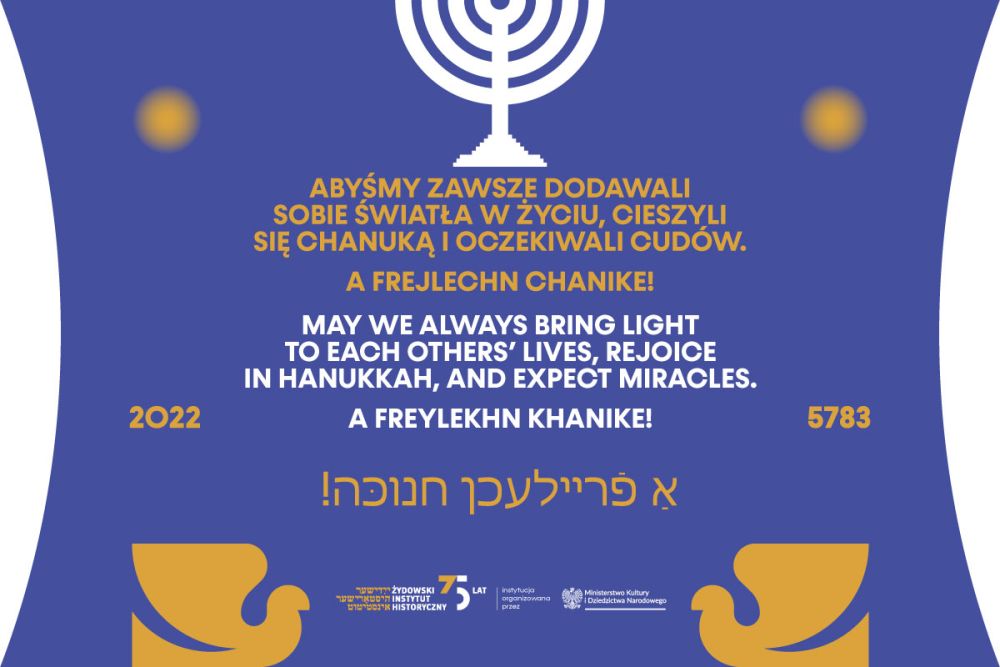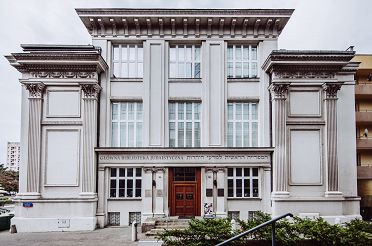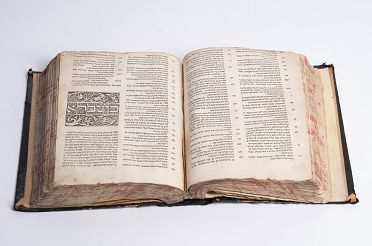A freylekhn Khanike!
Chag Hanukkah sameach!
Happy Hanukkah!
wishes Director Monika Krawczyk with the Staff of the Emanuel Ringelblum Jewish Historical Institute
_____
The Jews all over the world are celebrating the Festival of Lights (from Hebrew Chag HaUrim), commonly known as Hanukkah. On the streets, in synagogues and on roofs of houses, you can see Hanukkah lamps shining with vivid light, which signalises that holiday time is coming. According to the Jewish calendar, the Festival of Lights takes place on the 25th day of the month of Kislev (November — December) and lasts for eight days to the 2nd day of the month of Tevet (December — January). This year, Hanukkah begins on December 10.
Generally, all Jewish holidays are of historical or agricultural character. Hanukkah,which in Hebrew means „dedication” belongs to this first category. It commemorates events described in the First and Second books of Maccabees concerning the war of liberation in 164 B.C., when insurgents of Judas Maccabeus defeated forces of the Seleucid Empire of the Hellenistic Dynasties and rededicated the Temple in Jerusalem. Jewish tradition says that in this time an unbelievable event took place: the supply of scared olive oil that normally can last only for one day and is necessary to light the temple, due to the miraculous multiplication, managed to last for the whole eight days! That is exactly the number of days that is needed to make new, sacred olive oil! The light of oil lamps of the menorah was so important because it was a sign of the divine presence in the Temple.
Still now, the Jews, those living in Israel as well as those scattered around the world, in order to commemorate these wonderful events, light candles for eight days in a row, saying holiday blessing and singling Hanukkah hymn Ma’oz Tzur. Every day, after the sunset, people light one more candle than the previous day — this responsibility belongs to the host (in orthodox Jewish families it can be done only by men). The ritual involves lighting the candles starting from the first one on the left and it is forbidden to light one from the other. A special candle called shamash (Yiddish, from Hebrew shamash — helper) is used to light other candles. It is placed in the ninth, additional holder of the Hanukkiya — having eight branches for olive oil and candles. A lit Hanukkah candelabra is put in the window, or in other visible place, where it should be alight not less than for 30 minutes every day of the holiday and what is important, its light cannot be used for any practical reasons.
Hanukkah is one of the earliest Jewish holidays. It is 2200 years old, which means that it was already popular and celebrated during the times of Jesus. Most likely, he himself as a practising Jew took part in the celebrations. Residents of ancient Israel would go out to the streets, where everybody was dancing, singing and playing the glockenspiels and harps. At present, during the celebrations of this holiday, the Jews are also accompanied by music and singing. However, today it is not that vast and rather family-oriented. Another old custom involves giving presents to children. During Hanukkah, the youngest members of the family, both the good and less good ones, can count on being given doughnuts with delicacies and presents, which, according to the Jewish tradition, are accompanied by small coins, from Yiddish called Hannukah gelt. During Hanukkah, playing party games is popular, for example playing charades. However, the most popular of them is a game called dreidel, which is a four-sided spinning top. On its sides there are four Hebrew letters: Nun, Gimel, Hey, Shin, which are first letters of the words in the sentence Nes Gadol Haya Sham, which means "A great miracle happened there”. It is worth noticing that Judaism forbids all kinds of gambling. The only exception is during Hanukkah.
However, feast would not be feast without delicious delicacies made specially for this occasion. So what treats are part of the Jewish cuisine during Hanukkah? Above all, there have to be dishes prepared on olive oil or including it, which of course refers to the miraculous multiplication of the olive oil. During the Festival of Lights, the revellers also eat, among others, traditional potato pancakes called latkes, apple fritters and doughnuts. These sweet treats are a real sign that it is high time we started celebrating the Festival of Lights!


.jpg)


.png)
![MKiDN_bialy_logotyp_strona_ŻIH_EN.png [10.32 KB]](https://www.jhi.pl/storage/image/core_files/2023/1/12/0fbb15388d1a5d89c65891b6ce66941c/png/jhi/preview/ZNAK%20ENG.png)